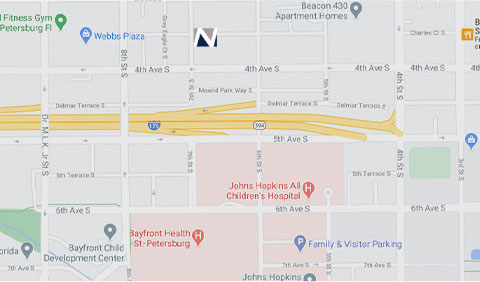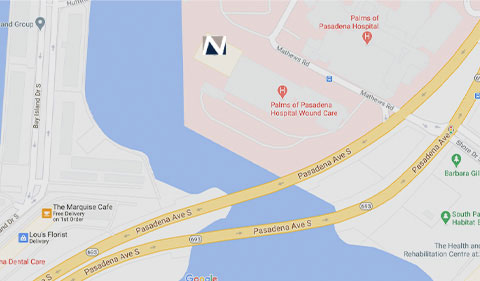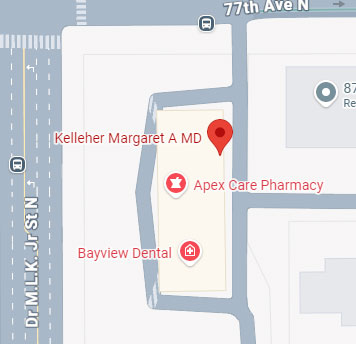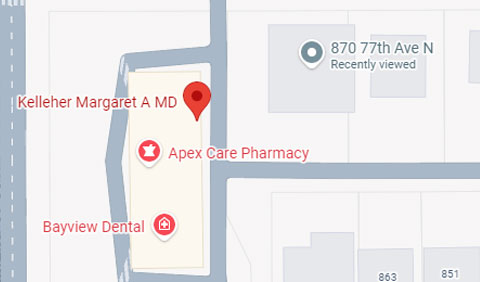Fractora Skin Resurfacing
Rejuvenate Your Appearance with Minimally Invasive RF Energy Near St. Pete Beach in Tampa Bay
One of the main reasons that faces begin to show signs of aging is loss of collagen. The protein is made in abundance in the skin throughout a person's youth, but production slows over time. This ramping down is compounded by the cumulative effects of collagen-damaging sun exposure, leading to a loss of youthful structure. As we age, we also slowly accumulate small imperfections in the skin, such as acne scars or texture irregularities. In order to truly improve these imperfections, it is necessary to resurface the skin. Fractora skin resurfacing at Tampa Bay's Nelson Dermatology is ideal for countering these effects of time and ultraviolet radiation, as well as repairing damage due to acne, trauma, and more.
Schedule your consultation for Fractora skin resurfacing in St. Petersburg or South Pasadena near St. Pete Beach in the Tampa Bay area. Call Nelson Dermatology at (727) 895-8131.
What Does Fractora Skin Resurfacing Treat?
Skin that has begun to show signs of aging is also typically skin that has suffered various injuries and bears the marks of conditions that have come and gone over the years. By encouraging renewed collagen, Fractora skin resurfacing can reduce the appearance of acne scars, rolling scars, texture irregularities, and other blemishes. The skin resurfacing treatment also causes skin to tighten so that it doesn't sag as dramatically, reducing the appearance of fine lines, tightening the jowls, and even improving deep lines.
Who Performs Fractora Skin Resurfacing at Florida's Nelson Dermatology?
The best providers for any skin treatment—even those that involve sophisticated devices—are those who truly understand the technology and the skin thanks to years of specialized education and practical experience. Nelson Dermatology's board-certified physicians focus on natural-looking results, using Fractora skin resurfacing for patients who will most benefit from its radiofrequency energy-driven technology. Our team has helped develop the treatment protocols for the skin resurfacing device, published some of the earliest scientific papers on its use, and trained other physicians. Our team also knows the skin, including how collagen loss and production can impact not only the focused treatment areas, but the face as a whole. We use this experience and knowledge to help you achieve your best results.
What Can I Expect from a Fractora Skin Resurfacing Session?
Fractora skin resurfacing treatments involve using a handpiece with tiny needles that are inserted into the skin. The device then passes radiofrequency energy from these tiny pins into your skin, heating it. This heating process actually removes tiny amounts of your skin in a process known as ablation. As we are heating your skin and resurfacing it, the process can be a bit uncomfortable.
Before starting the actual skin resurfacing treatment, we apply a topical numbing cream to dull sensation in the area. Additionally, we sometimes inject anesthetic into the nerves around the treatment area, similar to having your mouth numbed up at the dentist. This makes the treatment much more pleasant for our patients. Once the area is numb, the actual treatment with the device takes 10 to 30 minutes, with the specific duration depending on what areas we are treating.
Areas treated with Fractora skin resurfacing will feel tender and appear red and swollen in the days after a session. Patients often notice small dots on their skin, corresponding to areas where some of the skin has been ablated. These areas heal quickly over the next few days and are responsible for the skin resurfacing and tightening effects of the device. During the healing process, we recommend that a mild product such as Aquaphor be applied to the area. While some initial improvement will be visible in the days following the treatment, ideal results will develop over roughly six weeks.
How Does Fractora Skin Resurfacing Work?
While there are many devices that send radiofrequency energy through the surface of the skin to prompt fibroblasts to make collagen, Fractora skin resurfacing ensures that the energy gets to the layers where it will be most effective by using tiny needles as delivery mechanisms. These tiny pins pierce through the skin and reach down into the deeper layers of the dermis, where collagen and elastin tissue are present.
Each needle generates heat as the radiofrequency energy passes through your skin. This heat causes some of the skin cells to be coagulated along the needles, and then ablated (removed). This vaporization of skin creates a small opening, which looks like a dot on the surface. Basically, it creates a tiny wound in your skin, which then causes your body to start a wound-healing and repair process. This wound-healing process accomplishes skin resurfacing by closing each miniscule opening by tightening the existing collagen, as well as stimulating the production of new collagen and elastin tissue. The process also serves to improve the quality of the surrounding tissue. The result is a more even surface that will further smooth out as collagen production continues and the protein's levels rise in the skin over the following weeks.
What Other Radiofrequency Treatments Are Available?
Radiofrequency energy is a versatile tool for cosmetic rejuvenation. In addition to Fractora skin resurfacing, we use other radiofrequency technologies such as BodyFX fat reduction and Forma skin tightening. These treatments can also pair well with other options available at Nelson Dermatology, including BOTOX® and dermal fillers. Our team is excited to discuss Fractora and all our other treatment options to help you achieve smoother, younger-looking skin.
Schedule your consultation to discuss Fractora skin resurfacing and other treatment options in St. Petersburg or South Pasadena near St. Pete Beach in the Tampa Bay area. Call Nelson Dermatology at (727) 895-8131.








